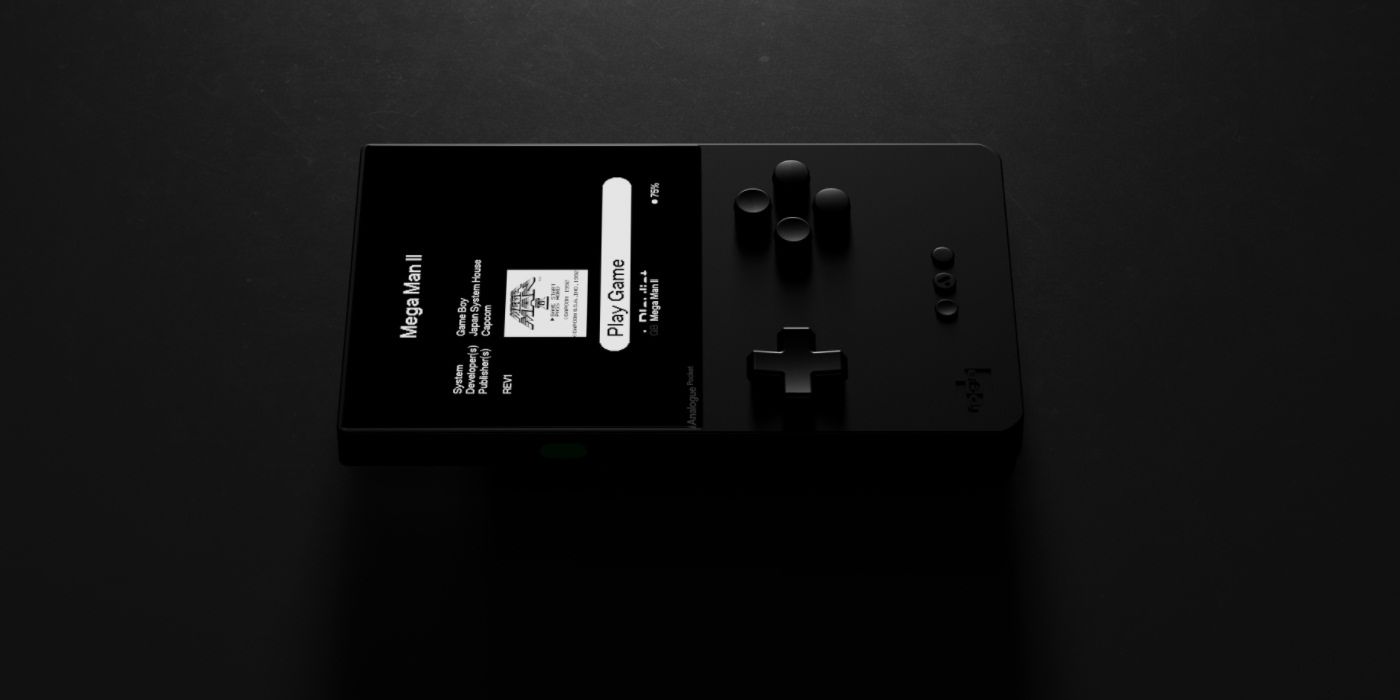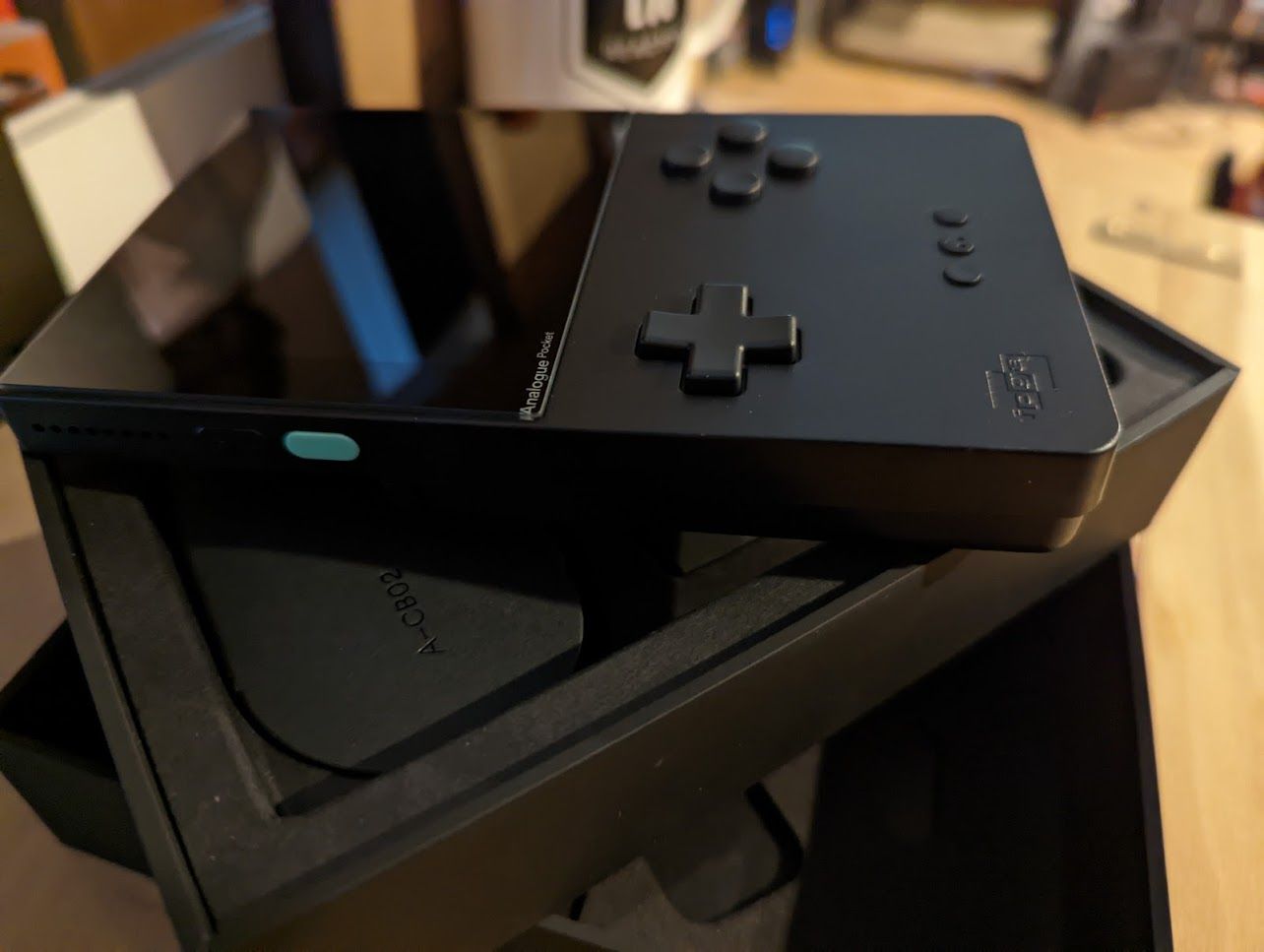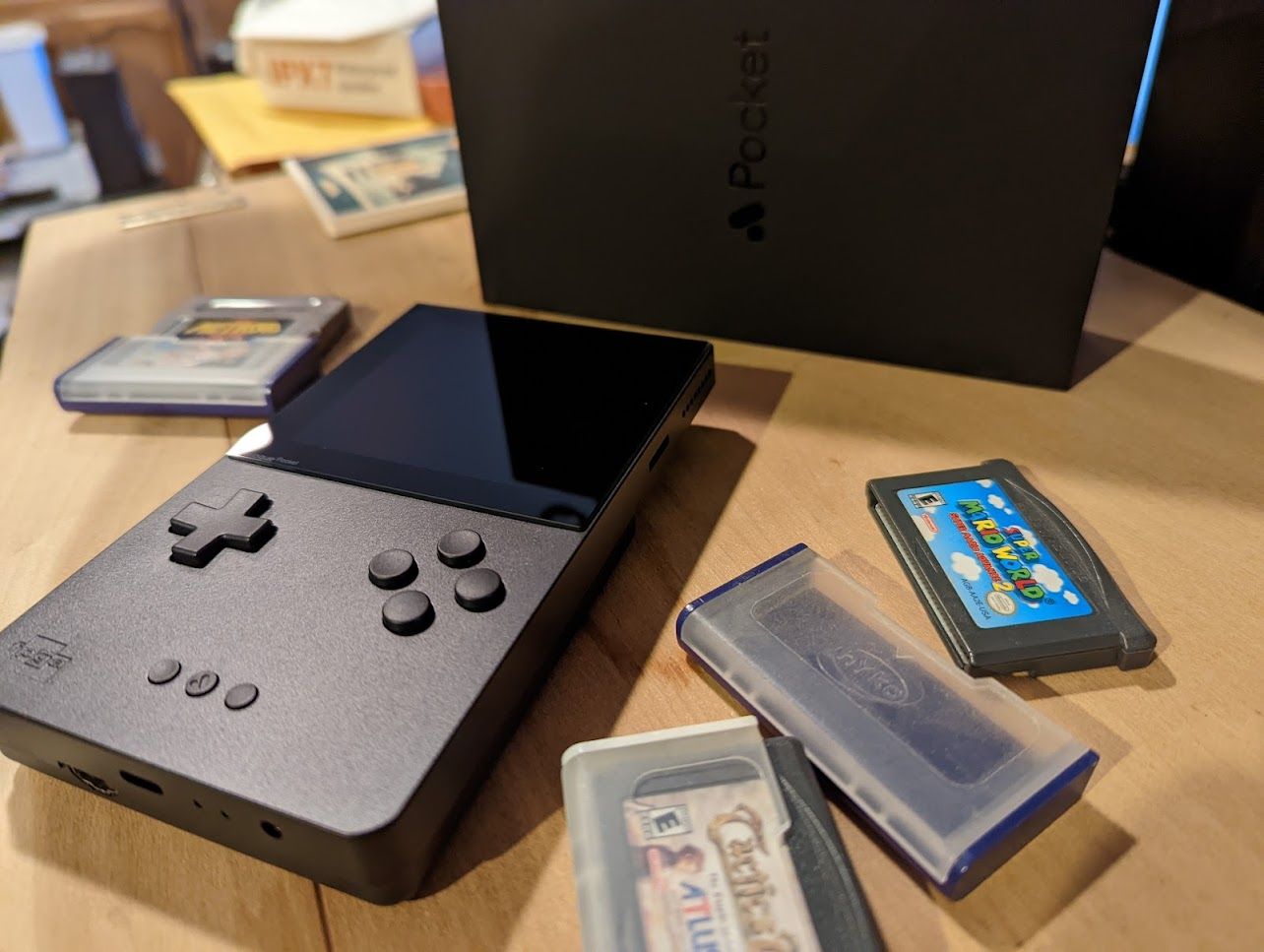Analogue, known for producing retro-modern console hardware, has turned its FPGA technology to Nintendo Game Boy systems with the Analogue Pocket, its brand-new retro handheld. What makes the Pocket special is, of course, the tech that powers Analogue’s other products, but further distinguishes itself by being the first handheld system that Analogue has produced, bringing FPGA technology to a stylish portable unit with a gorgeous screen that allows for playing Game Boy games (and more) on the go.
FPGA stands for Field Programmable Gate Array, denoting a chip that’s become the standard for hardware emulation. It’s different in a few key ways from the software emulation available in most downloadable apps on PCs and phones. Even some commercial products on modern platforms are built on software emulation foundations. While the workings are ultimately similar, the Programmable part of FPGA allows for reconfiguration of the chip to fit the entirety of an embedded system. What this means for the user is faster and more accurate emulation than software provides, essentially making it as close to the real thing as possible without having an original unit - up to and including Analogue’s claims that the Pocket can interface with original hardware using link cables.
What this also means is that the Pocket is designed to run actual cartridges. Those looking for something to play ROMs out of the box will have to look elsewhere, or at least do some tinkering with other tools. Analogue’s products are designed to run real games at the hardware level, and this is apparent from the get-go with the design of the Pocket. There are some planned emulation features such as save states supported by the system, though not all of these are available at launch.
The Analogue Pocket's Chassis Is A Thing Of Beauty
FPGA is one of the Analogue Pocket’s biggest selling points, but Analogue hasn’t skimped on its accompanying features, either, such as its nicely finished chassis, a magnificent screen, and quality buttons. Dedicated retro gamers and purists will be pleased to have a modern system with extra bells and whistles that still offers as near to 1:1 accuracy as it gets, but these other niceties are something any gamer can appreciate right off the bat. The system also features an optional Dock (sold separately at $99.99), allowing those with a comfy couch and robust home theater setup to take their mobile gaming to the big screen via HDMI, with Bluetooth wireless connectivity for controllers and support for up to four players.
Out of the box, the Pocket will play any Game Boy, Game Boy Color, or Game Boy Advance game natively. These plug into a slot in the back of the unit that rests comfortably between the shoulder buttons. A vibrant 3.5 inch Gorilla Glass screen with a resolution of 1600x1440 at 615ppi is the star of the show, but the array of buttons and ports (including a USB-C port for charging and connectivity, and a link port of the Game Boy’s original style and functionality) round out the rest nicely. There are four face buttons in addition to the directional pad, stand-ins for Start and Select, and a button with the Analogue logo for returning to the system’s home screen. All but the home button are unmarked, allowing for reconfiguration via the system menu.
For those simply looking to understand whether the Pocket is an ideal way to do what it was primarily intended to do (playing Game Boy games), the answer is an emphatic yes. There isn’t a much better way to play this particular subset of retro games on real hardware, and the things it most sets out to accomplish, it does. The battery life is good, coming in a bit above the advertised 6 hours with reasonable brightness levels. The screen is beautiful and sharp. The audio works well and recreates the expected soundscapes, working solidly either through the built-in speakers or wired headphones, though there is no wireless connectivity. The buttons feel good, with two concave and two convex face buttons, all with enough stiffness to feel substantial with easy usability. The shoulder buttons aren’t quite perfect for those with larger hands, likely an inevitability given the size of the unit, but don’t feel uncomfortable or difficult to use. If emulation is going to preserve games, this kind of hardware is a great way to see it happen.
The Pocket Is A Near-Perfect Analogue Product
Despite all of these positives, there are currently a few caveats, and the Pocket may make a slightly questionable first impression. Its initial 1.0 launch firmware was sometimes buggy, reportedly affecting different units and games with a few different issues. These seem to have been dealt with in a quick post-release update, but Analogue has stuck to its guns from past hardware releases with how updates are delivered: Users must update the unit via a blank microSD card, or can alternatively use a blank USB-A thumb drive if (and only if) they have access to the Dock, which turns the Analogue Pocket retro handheld into a Switch-like device for a TV.
It’s a less elegant solution than just plugging in a USB cable might be, and all the more vexing given that units shipped at the time of this writing may be all but unusable for gaming without the update. The review unit given to Screen Rant alternately mashed random buttons at ultrafast speeds, making random menu selections before it was possible for a user to intervene, or in some games, had button presses so delayed the games became completely unplayable. Thankfully, the 1.0a update - despite the inconvenience of having to wipe a microSD card - handily dispatched these issues, and nothing similar was experienced during use for the review.
But this leads to the other primary issue with the unit at launch, which is that its features feel a touch half-baked. The aforementioned button reconfiguration? In the current official firmware, the only options are to use either the default or Super Game Boy configurations, which can be set individually per system. Full manual reconfiguration is still coming in a future update. Save states, a mandatory feature of any run-of-the-mill software emulator, are also not functional.
To be fair, this is possibly the first time an FPGA unit has even supported save states, and Analogue’s previous FPGA products didn’t have it. Still, it’s odd to see a greyed-out “Memories” menu that will be the future home of save states and screenshots when the 1.1 firmware hits, especially when the feature already exists in beta. For now, the only option for early adopters who need that functionality is to use the 0.12 beta firmware, which allows for a single save state that doesn’t last between cartridge swaps or power cycles. Because the system supports flawless wake/sleep capabilities, those who don’t feel the need to cheat their way through some of the toughest retro games probably won’t find it to be a huge problem, but it’s certainly worth mentioning that a talked-about feature hasn’t yet actually made it into the product proper.
Those familiar with Analogue likely won’t be surprised by this turn of events, as feature drip-feed has largely been Analogue’s methodology with its prior releases. The stability and accuracy of the games its systems run seem to be the company’s first priority, with other feature niceties and quality-of-life additions coming down the line.
As it stands, given Analogue’s past support for its products, it can at least be said that there’s little reason to worry. Early adopters of the Pocket will at this point essentially have a fully-featured Game Boy Advance with full legacy support at their disposal for $219.99, with native hardware emulation that’s reliable and accurate. For those willing to pay a little extra, the Pocket will even support several other systems at $29.99 a pop, including Neo Geo Pocket Color, PC Engine games (TurboGrafx-16 and SuperGrafx), Game Gear, and the Atari Lynx - though again, only the Game Gear adapter is currently available for sale at launch. The Pocket is a deal there’s little reason to pass up for any retro handheld enthusiast, and even those with only a small library of supported games will find it’s a quality piece of hardware that doesn’t break the bank. There’s even a second FPGA chip in the unit that makes more system support a very real possibility.
There are a few other features included with the Pocket that will excite a certain subset of users, like Nanoloop, a fun little music sequencer/synthesizer that will only be of use to a handful of people (there’s even full MIDI functionality), and support for GB Studio, a third-party software package that lets people create their own games. Supported on the Pocket with drag-and-drop ease, this makes homebrew games accessible just by copying them to an SD card. Even if not the stars of the show, the GB Studio support in particular rounds out the package and makes it feel complete.
All in all, the Pocket is a near-perfect product with a less-perfect launch. For those who know what they’re looking for, they’d be hard pressed to find anything else that does what the Pocket does. The brilliant screen is a stunner, despite being an LCD rather than an OLED, and FPGA in a handheld is a revelation. Among the few knocks that can be levied against it are the fact that the Dock is quite expensive, Wi-Fi or even USB support for updates would have been nice, and it’s odd that so many features are still coming in future updates, but these don’t detract from the Pocket as a unit. While there are other devices that may do software emulation good enough to get by on, retro purists who demand accuracy (and playing real games on real hardware) have absolutely no reason not to pick up the Analogue Pocket for themselves, to hopefully keep their Game Boy collection viable for another 30 years.
The Analogue Pocket is available for pre-order now on the official website. Screen Rant was provided with an Analogue Pocket for the purpose of this review.



